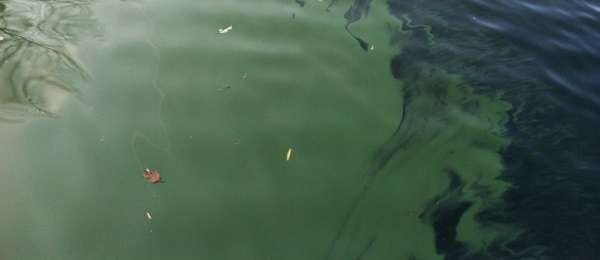news
![]()
August 25, 2014
Bursts of phosphorus to blame for Lake Mendota's water quality problems

 Phosphorus runoff doesn’t torture Madison’s Lake Mendota with a steady drip; it attacks in big bursts. WSC researchers have discovered that these big bursts of phosphorus account for most of our water quality problems, a finding that has significant implications for efforts to clean up the Yahara lakes.
Phosphorus runoff doesn’t torture Madison’s Lake Mendota with a steady drip; it attacks in big bursts. WSC researchers have discovered that these big bursts of phosphorus account for most of our water quality problems, a finding that has significant implications for efforts to clean up the Yahara lakes.
According to their study, a mere 29 days per year, on average, account for three-quarters of Lake Mendota’s annual phosphorus (P) budget, or the total amount of P that infiltrates the lake. Most of these days occur in the spring or late winter, when the conditions for a burst of P are right.
Several stars need to align for high P loads, what scientists call these bursts, to occur. The soil must be deluged by water (e.g., a big rain storm), have little or no vegetation to hold back the water (and thus be susceptible to erosion), and be saturated with phosphorus. In other words, a heavy spring shower on bare soil that is covered in manure would cause a surge of phosphorus runoff into the lakes.
Climate change is adding to the equation. In Wisconsin, climate change is giving us more days of extreme rain and, as a result, could cause larger runoff events, adding more phosphorus to the lakes’ already overtaxed P budget.
“We’re getting bigger storms, and high load days are associated with bigger storms,” said the study’s lead author and WSC principal investigator, Steve Carpenter.
With or without climate change, trends in land and livestock management are also increasing the frequency of high P loads. In the Yahara Watershed, cows are producing more manure, and impervious surfaces (i.e., paved surfaces that don’t allow water to percolate into the ground) are replacing more and more vegetated land—both factors that increase the risk of phosphorus runoff.
However, strategic land and water management could counter the negative impacts of these trends. According to Carpenter, their main finding suggests that, to help clean up the lakes, managers, scientists and farmers need to look hard at what is happening to the land on those 29 days.
“We’re not talking about how to reduce high P loads every day, but about identifying the high risk portion of the year and really keying in on it,” he said.
For example, this could mean working with farmers to understand what factors enable large amounts of manure to sit on the frozen, bare ground in the late winter and spring and finding ways to reduce those amounts, such as storing the manure in holding tanks until the summer, when more vegetation lowers the runoff risk, or sending it to manure digesters.
The study was published earlier this month in the journal Aquatic Sciences.


